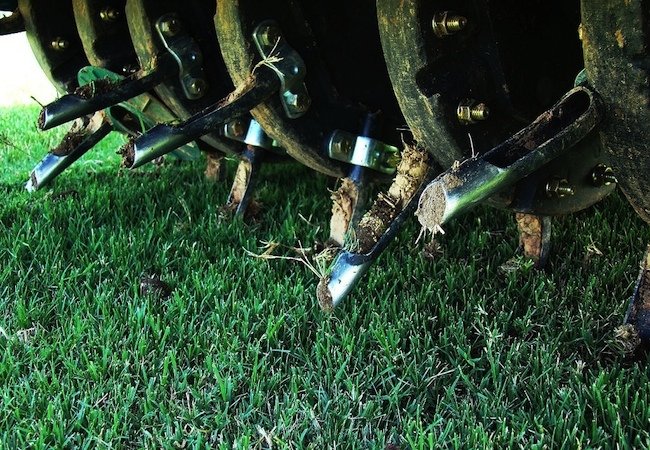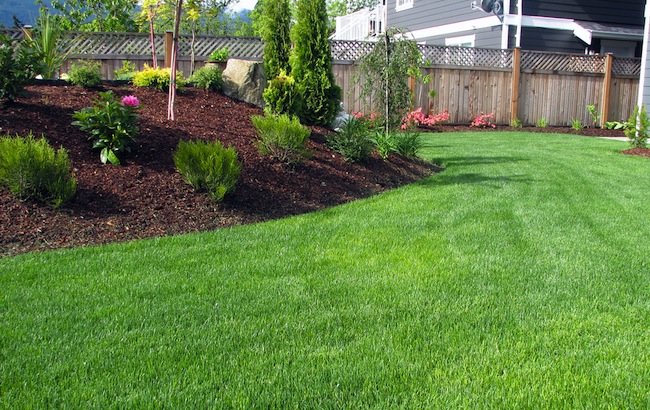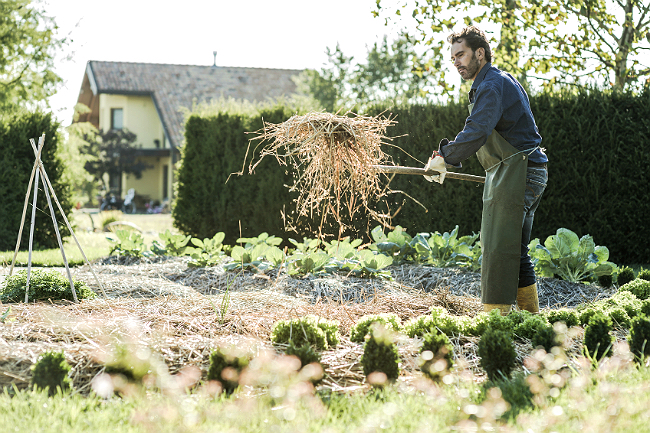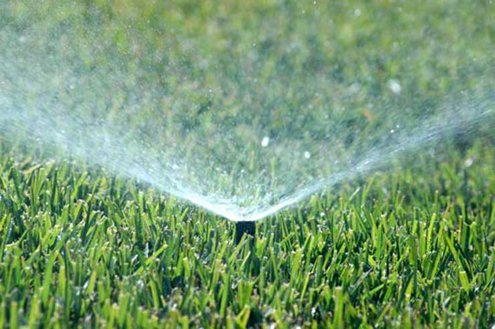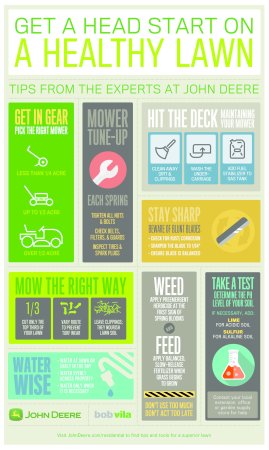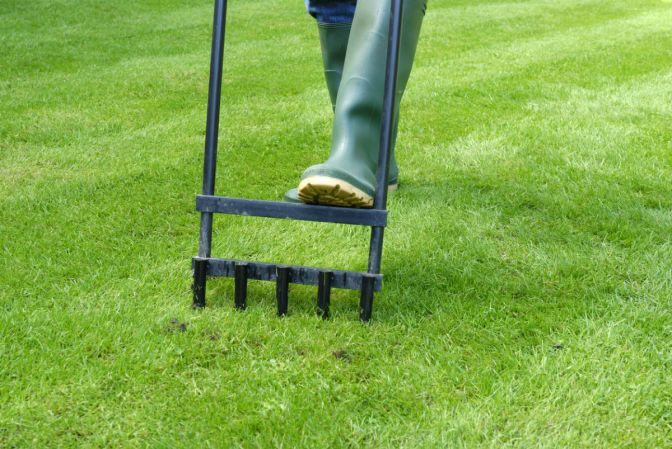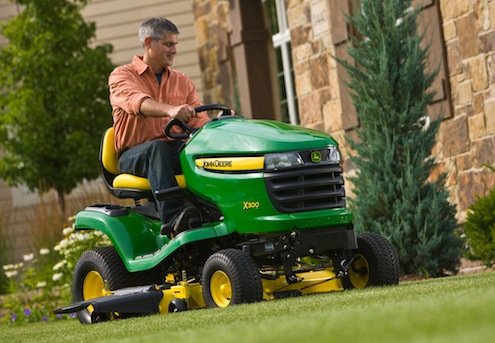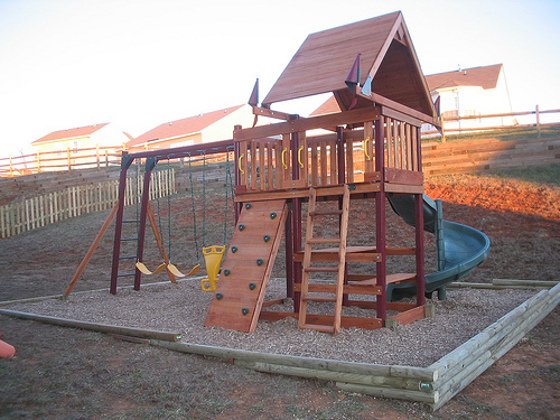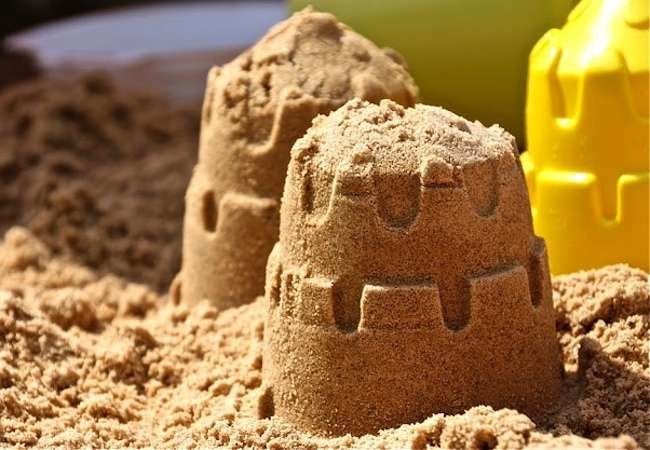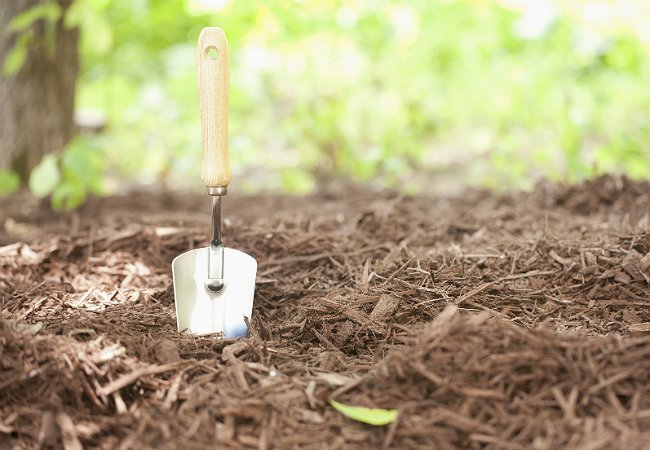We may earn revenue from the products available on this page and participate in affiliate programs. Learn More ›
It’s not easy maintaining a lush carpet of green grass. We only see the blades on the lawn surface, but the health of any planted grass depends on factors at play underground. During the growing seasons—spring and fall, generally—experts recommend aeration as a means of ensuring that air, moisture, and nutrients are able to reach the roots. There are two ways to tackle the job: The best technique largely depends on the size of your property, but both are discussed in detail below.
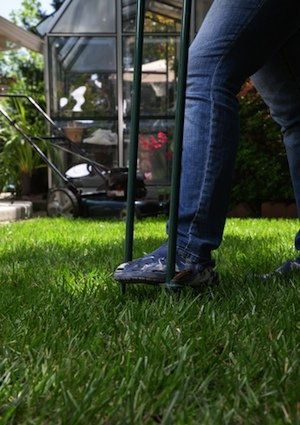
Plug Aeration
For homeowners with a generously sized lawn, the most suitable method of aerating is by means of a low-tech mechanical tool known as a plug aerator. Buy or rent one at your local home center (note that some models may need to be rigged up to your riding mower). As you push the aerator along (or tug it behind your mower), the tool rotates hollow steel spikes into the soil. Those spikes, in turn, pull cylinders of dirt from the soil, leaving small holes in the ground through which air, moisture, and nutrients can travel to the grass roots. Rather than raking and removing the soil plugs that the aerator leaves in its wake, leave them where they lie; eventually, foot traffic and rain will return those cores to the soil bed.
Spike Aeration
Because it’s more labor intensive, spike aeration is suggested only for homeowners with lawns of modest size—say, a half acre or less. The tool used is nothing more sophisticated than a modified pitchfork. In fact, if you’d rather not buy or rent a spike aerator from your local home center, you can actually use a pitchfork if you happen to have one in your garden shed. There’s one main difference between a spike aerator and its mechanized cousin: The former has solid (not hollow) spikes, so it does not create the soil cores that distinguish the latter’s operation.
For best results with a spike aerator, take the time to prepare the lawn before getting down to business. That means raking and removing all the leaves and debris that might prove to be an impediment. Also, because dry earth is harder to grapple with than moist soil, you can make the going a little easier by watering the lawn beforehand. Make sure to give equal treatment to all sections of the grass. Choose a corner and start there. Go in a straight line across the grass, then turn and travel in the opposite direction, this time working to the side of your previous path. Continue back and forth in this manner until you have aerated the entire property.

